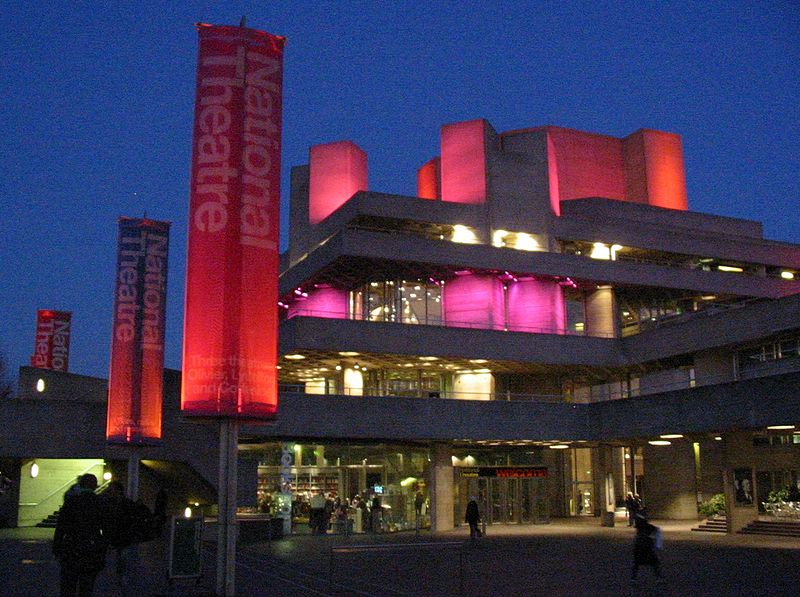National Theater
From Londonhua WIKI
Revision as of 13:03, 20 May 2017 by Mthatfalvi (talk | contribs)
National Theater
 National Theater | |
| The National Theater | |
|---|---|
| Artist | Attributed to Man vyi |
| Year | 2008 |
| Dimensions | 55.2 cm × 43.8 cm ( 21 3⁄4 in × 17 1⁄4 in) |
| Location | National Theater, London |
Use this page as a template when creating new articles by clicking Actions>View Source and create a new page with the name of the article you're creating. In the newly copied page, upload your own image, then replace the "Articlepicture.jpg" above with the new image name. Replace "Representative Image" in both the image line and the top-level heading above with your first and last name. Delete this whole paragraph beneath the Representative Image title but not including the Table of Contents tag __TOC__.
Overview
The National Theater (or as it is officially named the Royal National Theater) was first thought of in 1847 through pamplets and newspaper articles wanting a National Theatre that would preserve timeless classics as they were supposed to be performed. Officially, the Company opened in 1963 with a performance of Hamlet. [1] From 1963 till 1976, the company was based at the Old Vic Theatre in Waterloo. The building that the company is in now was designed by architects Sir Denys Lasdun and Peter Softley.
Contents
Theater Space
There are three theaters within the National Theater; the Olivier theatre, the Lyttelton theatre and the Dorfman theatre. Each theater is different in accords to the size, style and design of each theater. This is meant to accommodate attendance, set design and sound acoustics that can be different for each performance.
Olivier Theatre
The Olivier Theatre is named after Laurence Olivier who was the first director of the National Theatre and an British actor. The Olivier Theatre is the largest of the three theatres and it can accommodate 1,150 people in its fan-shaped auditorium. [2] The theater is designed to be able to include the whole audience in the production on stage. The design of the theater is based on the theaters found in Greece. The stage has a drum that can be used to change scenery and props. The floor can be brought down and lifted up. For the production of Treasure Island, this technology was used to make the stage look like a ship. The fly above is 20 meters high and has the capacity to lift a double decker bus.
Lyttelton Theatre
According to the National Theater website, the Lyttelton Theatre was named after Oliver Lyttelton, who was the National Theatre's first chairman. This theater is a proscenium style that is know for excellent acoustics.This theater sits 890. The Lyttelton has an adjustable proscenium for different set design needs. It can be an open-ended stage or it can have a an orchestra pit.
Dorfman Theatre
The Dorfman Theatre most adjustable Theater of of the National Theater stages. It is a flexible seating rectangular room that can house up to 450 people. Because this theater is flexible with seating, each performance performed in the Dorfman Theatre has a different seating chart based on the stage design.
Scenic
Lighting & Projections
Sound
Costumes
Performances
Twelfth Night
Summary
Dramatic Elements
References
- ↑ National Theatre. (n.d.). Retrieved May 20, 2017, from https://www.nationaltheatre.org.uk/about-the-national-theatre/history
- ↑ National Theatre. (n.d.). Retrieved May 15, 2017, from https://www.nationaltheatre.org.uk/your-visit/venues-at-the-national-theatre
External Links
Image Gallery
